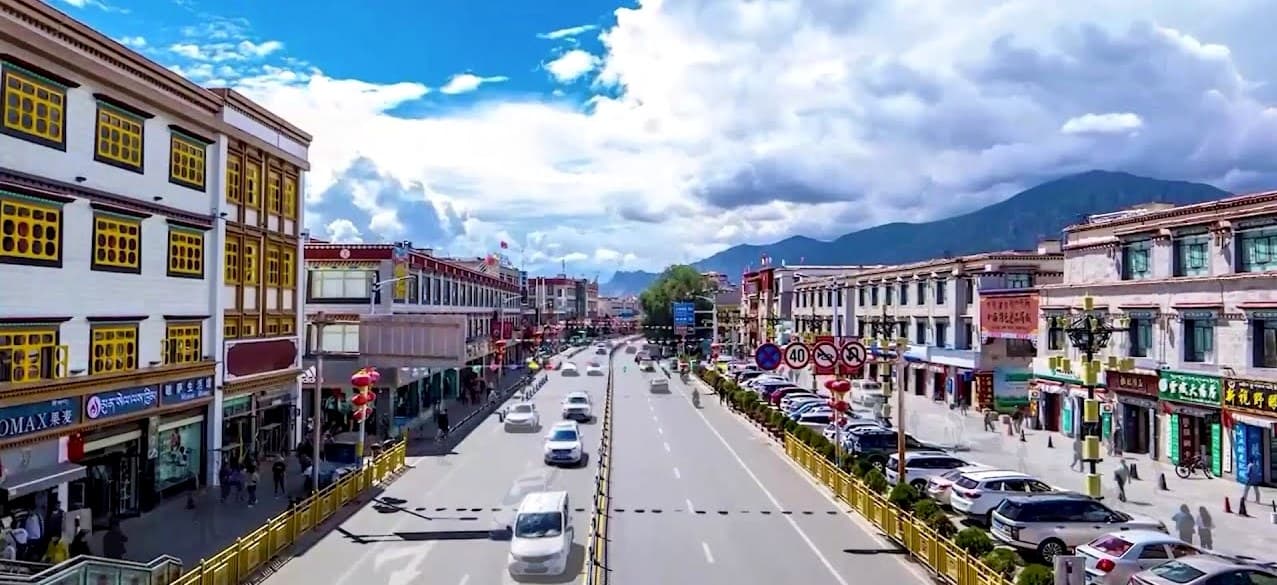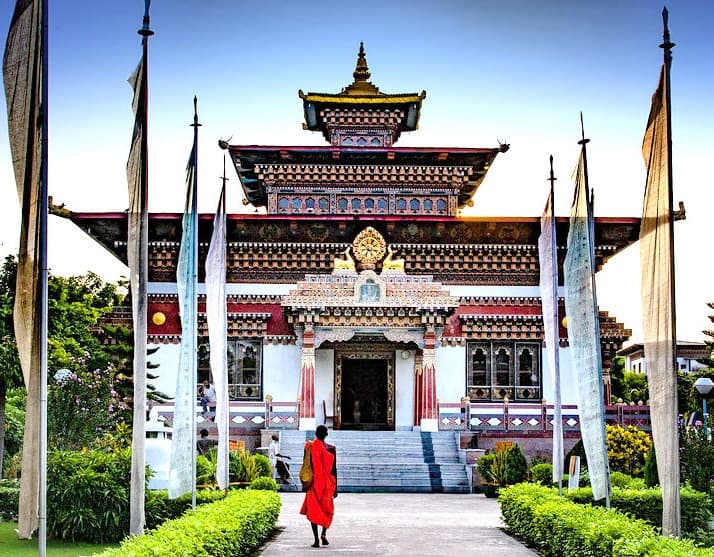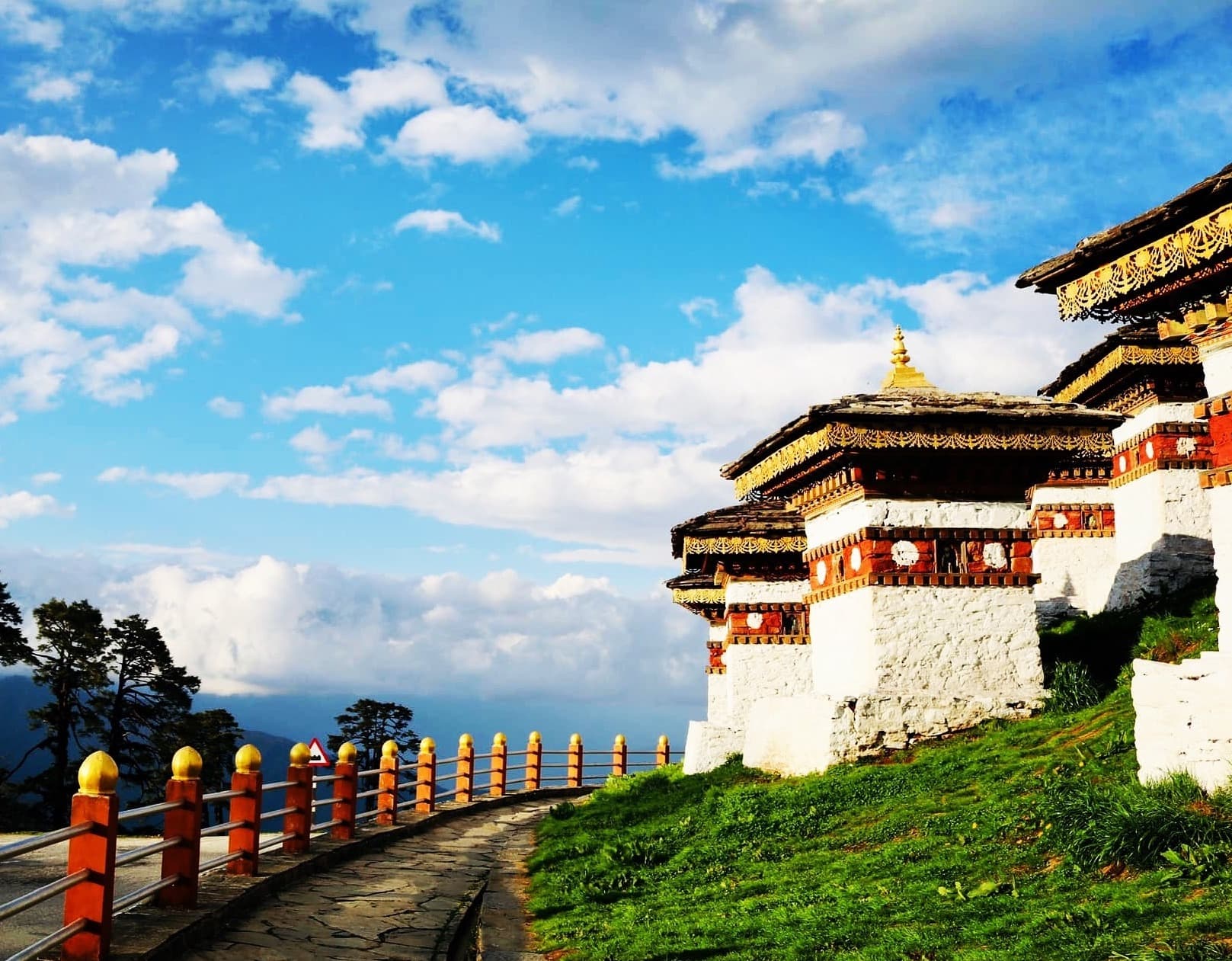Discovering transportation in Tibet is essential for any traveler venturing into this majestic region. With its unique terrain and cultural richness, navigating Tibet transportation options requires careful planning. From flights to Lhasa at Lhasa Gonggar Airport to the breathtaking Qinghai-Tibet Railway journey, each mode of transport offers its own adventure. Road trips in Tibet unveil stunning landscapes while local buses in Lhasa provide convenient city travel. For more flexibility, consider renting a car in Tibet or embarking on a thrilling motorbike rental in Tibet experience. Our Tibet travel guide covers Tibet transportation tips and ensures a safe travel in Tibet, including securing necessary travel permits for Tibet. Whether you're trekking through remote trekking routes in Tibet or heading from Lhasa to Everest Base Camp travel, understanding these transport options enriches your Tibetan journey.
At Druk Holidays, we are proud to be recognized as the leading option for transportation in Tibet. Our commitment to excellence ensures that every aspect of your journey, from flights to Lhasa at Lhasa Gonggar Airport to the scenic Qinghai-Tibet Railway adventure, is meticulously planned and executed. We offer diverse Tibet transportation options, including comfortable road trips in Tibet, reliable local buses in Lhasa, and convenient car rentals in Tibet. Our expertise extends to organizing thrilling motorbike rentals in Tibet for adventurous souls. With a deep understanding of Tibet travel guide essentials and Tibet transportation tips, we prioritize your safety and comfort, securing necessary travel permits for Tibet to ensure a seamless journey. Whether you're exploring remote trekking routes in Tibet or embarking on the iconic Lhasa to Everest Base Camp travel, Druk Holidays is your trusted partner for an unforgettable Tibetan adventure.
Flights to Lhasa
Flights to Lhasa offer travelers a gateway to one of Tibet's most culturally significant and visually stunning destinations. Lhasa Gonggar Airport, situated at an altitude of 3,570 meters (11,710 feet), serves as the primary entry point for visitors arriving from major Chinese cities such as Beijing, Shanghai, and Chengdu. Here are the highlights and essential points to know about flights to Lhasa:
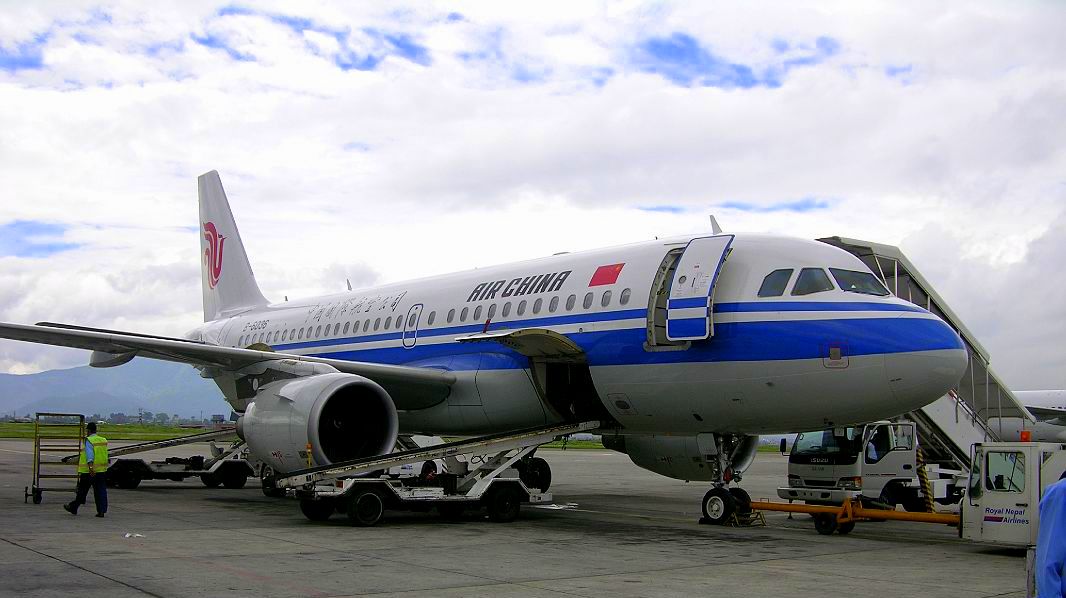
- Convenience: Direct flights to Lhasa Gonggar Airport provide convenient access to Tibet, minimizing travel time and allowing for a seamless transition into this unique region.
- Scenic Arrival: The approach to Lhasa offers breathtaking aerial views of the majestic Himalayas and the vast Tibetan Plateau, setting the stage for an unforgettable journey.
- Cultural Hub: Lhasa, the capital city of Tibet, is steeped in rich cultural heritage, boasting iconic landmarks such as the Potala Palace, Jokhang Temple, and Barkhor Street, all within reach from the airport.
- Acclimatization: Flying directly into Lhasa helps travelers acclimatize to the high altitude gradually, reducing the risk of altitude-related discomfort often associated with rapid ascents.
- Gateway to Exploration: Beyond Lhasa, the airport serves as a starting point for expeditions to other renowned Tibetan destinations, including Everest Base Camp, Namtso Lake, and various trekking routes in Tibet.
For those seeking to immerse themselves in Tibet's spiritual allure and natural beauty, flights to Lhasa provide a convenient and inspiring beginning to an extraordinary journey.
Qinghai-Tibet Railway
The Qinghai-Tibet Railway stands as an engineering marvel and a gateway to experiencing the awe-inspiring landscapes and cultural riches of Tibet. Here’s a comprehensive overview of this iconic railway:
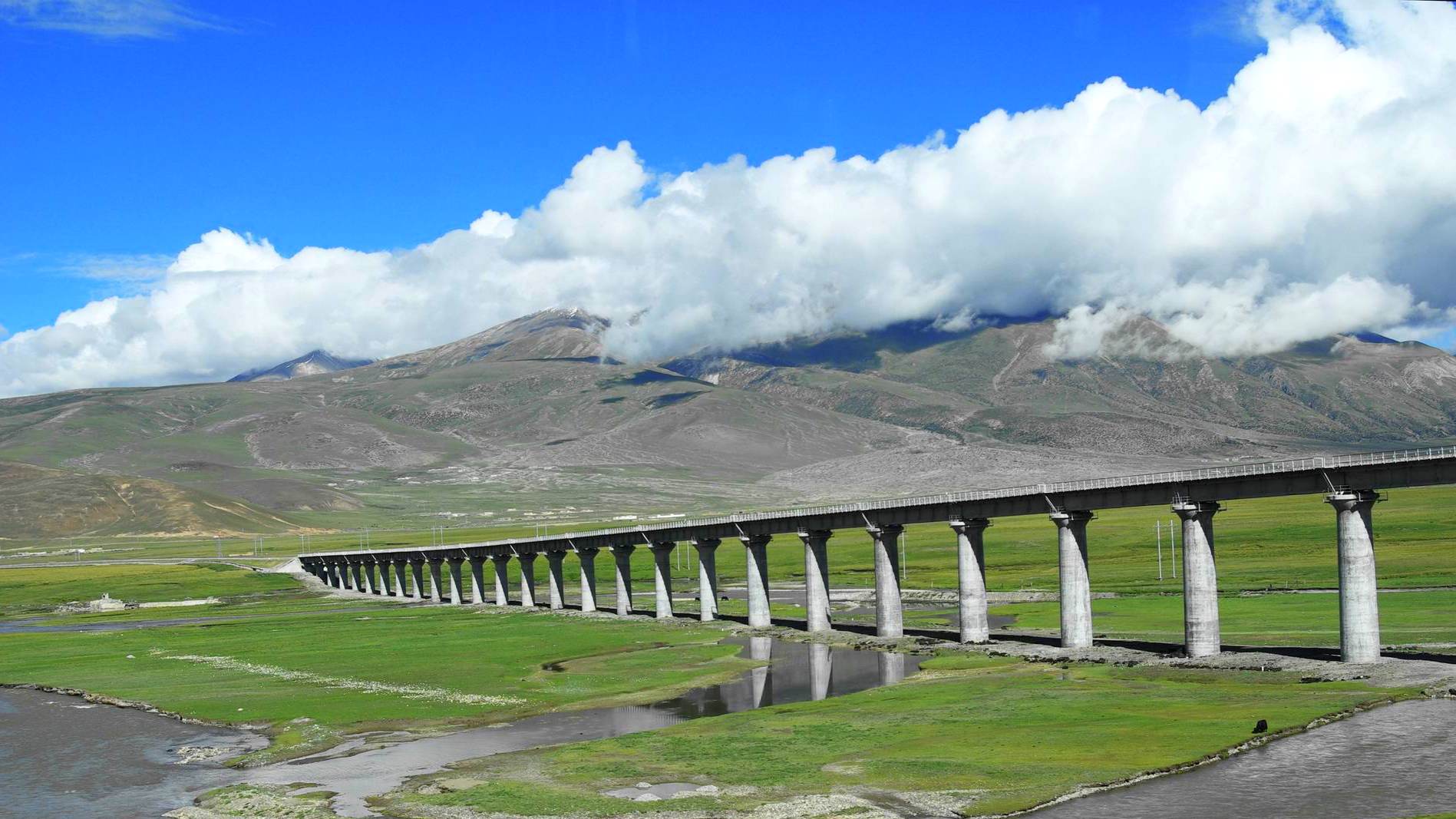
- Engineering Feat: Spanning over 1,900 kilometers (1,200 miles) and reaching altitudes as high as 5,072 meters (16,640 feet), the Qinghai-Tibet Railway is the world’s highest and longest plateau railway, showcasing human ingenuity in conquering challenging terrains.
- Scenic Route: Journeying on the railway offers unparalleled views of the Tibetan Plateau’s vast plains, towering mountains, and pristine lakes, including the breathtaking Tanggula Pass, the highest point on the line.
- Acclimatization: The gradual ascent of the railway helps travelers acclimate to the high altitude, mitigating the effects of altitude sickness and ensuring a comfortable transition into Tibet’s rarefied atmosphere.
- Cultural Insight: Along the route, passengers can glimpse into Tibet’s rich cultural heritage, passing by traditional Tibetan villages, monasteries adorned with prayer flags, and nomadic herders roaming the highlands.
- Convenience: Departing from cities such as Beijing, Chengdu, and Xining, the railway offers multiple classes of service, including sleeper compartments for long journeys, providing both comfort and adventure.
- Gateway to Lhasa: Arriving in Lhasa, the railway connects travelers to the city’s iconic attractions, including the Potala Palace, Jokhang Temple, and the bustling Barkhor Street, making it an ideal starting point for exploring the wonders of Tibet.
Whether for its breathtaking vistas, cultural immersion, or logistical convenience, the Qinghai-Tibet Railway offers a unique and unforgettable journey through one of the world’s most remote and enchanting regions.
Road Trips
Road trips in Tibet promise an exhilarating adventure through some of the world's most stunning landscapes and cultural treasures. Here's why embarking on a road trip in Tibet is an experience like no other:
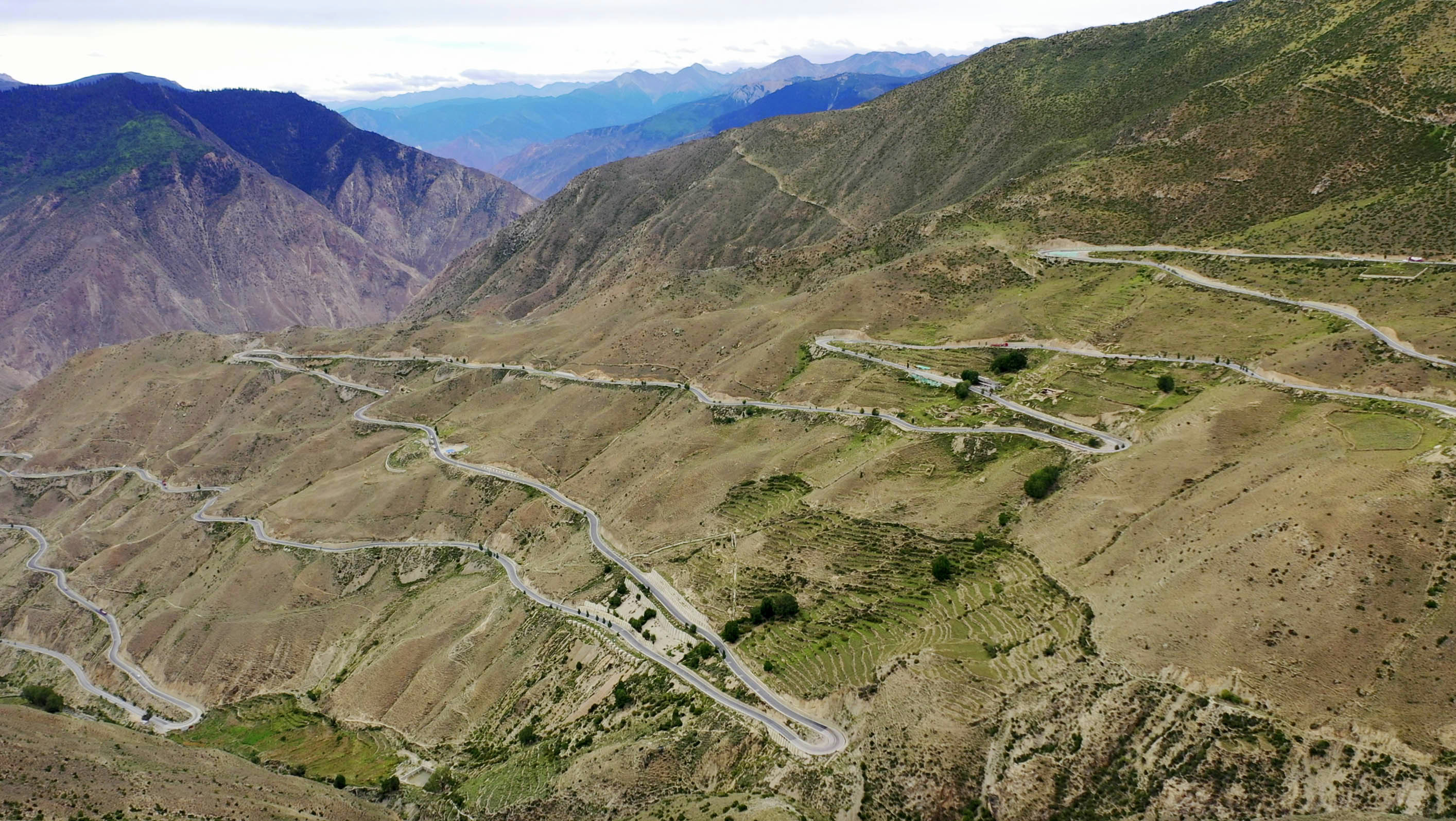
- Scenic Beauty: Tibet boasts diverse and breathtaking scenery, from rugged mountains to expansive plateaus and turquoise lakes. A road trip allows travelers to witness these natural wonders up close and capture unforgettable moments.
- Cultural Exploration: Along the way, road trippers can visit traditional Tibetan villages, ancient monasteries, and nomadic settlements, gaining insights into the region's rich cultural heritage and spiritual traditions.
- Flexibility and Freedom: Driving through Tibet offers unparalleled freedom to explore off-the-beaten-path destinations and discover hidden gems inaccessible by other means of transport. It allows travelers to set their own pace and create personalized itineraries.
- Challenging Terrain: While Tibet's roads vary from well-paved highways to rugged mountain passes, each route presents its own challenges and rewards. It's an opportunity for adventure enthusiasts to test their driving skills amidst diverse landscapes.
- Local Encounters: Interacting with local Tibetans along the journey provides a deeper understanding of their way of life, traditions, and hospitality. Sharing meals and stories with locals adds a cultural dimension to the road trip experience.
- Iconic Routes: Popular road trip routes in Tibet include journeys from Lhasa to Everest Base Camp, the Friendship Highway connecting Lhasa with Nepal, and the scenic drive around Mount Kailash. Each route offers unique experiences and breathtaking views.
For travelers seeking a blend of adventure, exploration, and cultural immersion, a road trip in Tibet promises an unforgettable journey into the heart of this mystical land.
Local Buses and Public Transportation
Local buses and public transportation in Tibet provide essential mobility options for both locals and travelers exploring this culturally rich and geographically diverse region. Here’s a closer look at what makes these modes of transport noteworthy:
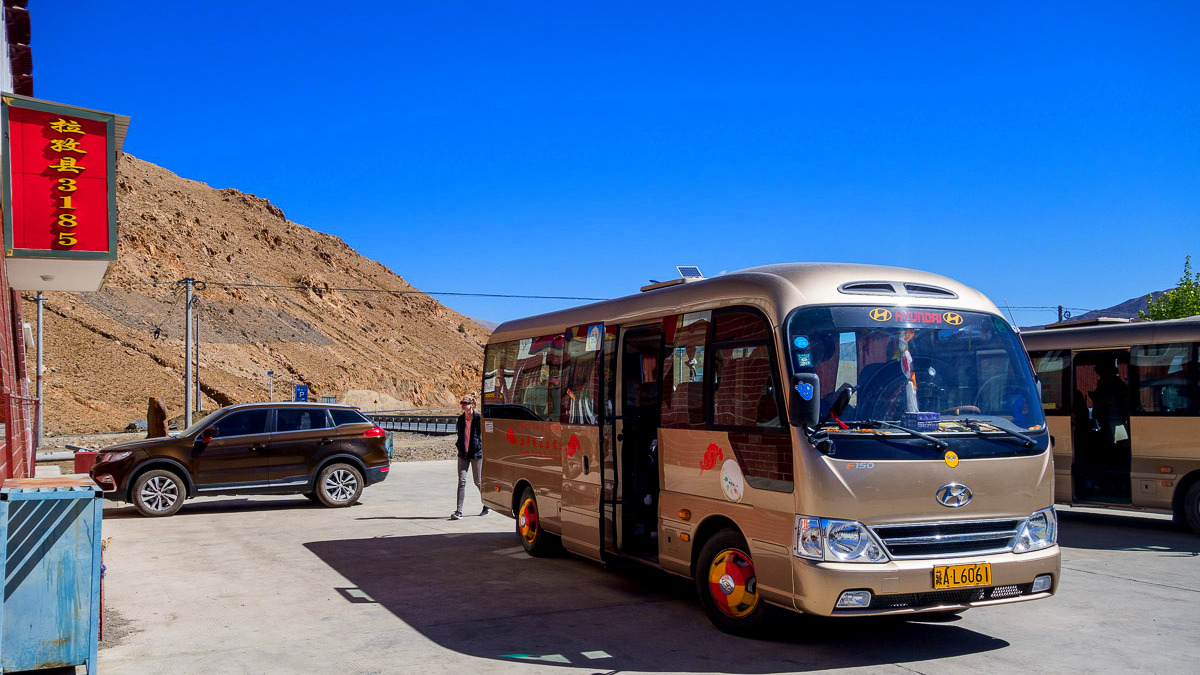
- Accessibility: Local buses serve as the primary mode of public transportation within urban centers like Lhasa, connecting residents and visitors to key destinations such as cultural sites, markets, and residential areas.
- Affordability: Buses are a budget-friendly option for traveling within cities and towns in Tibet, offering fixed fares that make them accessible to a wide range of travelers.
- Convenience: The bus network in Lhasa is relatively comprehensive, with routes covering major landmarks such as the Potala Palace, Jokhang Temple, and Barkhor Street, facilitating easy exploration of the city’s attractions.
- Local Experience: Riding local buses provides an authentic glimpse into daily life in Tibet, allowing travelers to interact with locals and observe their customs and traditions firsthand.
- Reliability: While schedules may vary, buses generally operate regularly throughout the day, providing consistent service for commuters and tourists alike.
- Environmental Considerations: Opting for public transportation supports sustainable travel practices by reducing individual carbon footprints and contributing to local environmental conservation efforts.
For travelers seeking an affordable, convenient, and culturally immersive way to navigate Tibetan cities, local buses and public transportation offer a valuable and enriching experience. Whether for sightseeing, shopping, or simply soaking in the local ambiance, hopping on a bus in Tibet is a journey in itself.
Renting a Car or Motorbike
Renting a car or motorbike in Tibet offers adventurous travelers unparalleled freedom to explore the region's breathtaking landscapes and cultural wonders at their own pace. Here’s why renting a car or motorbike is a fantastic option for experiencing Tibet:
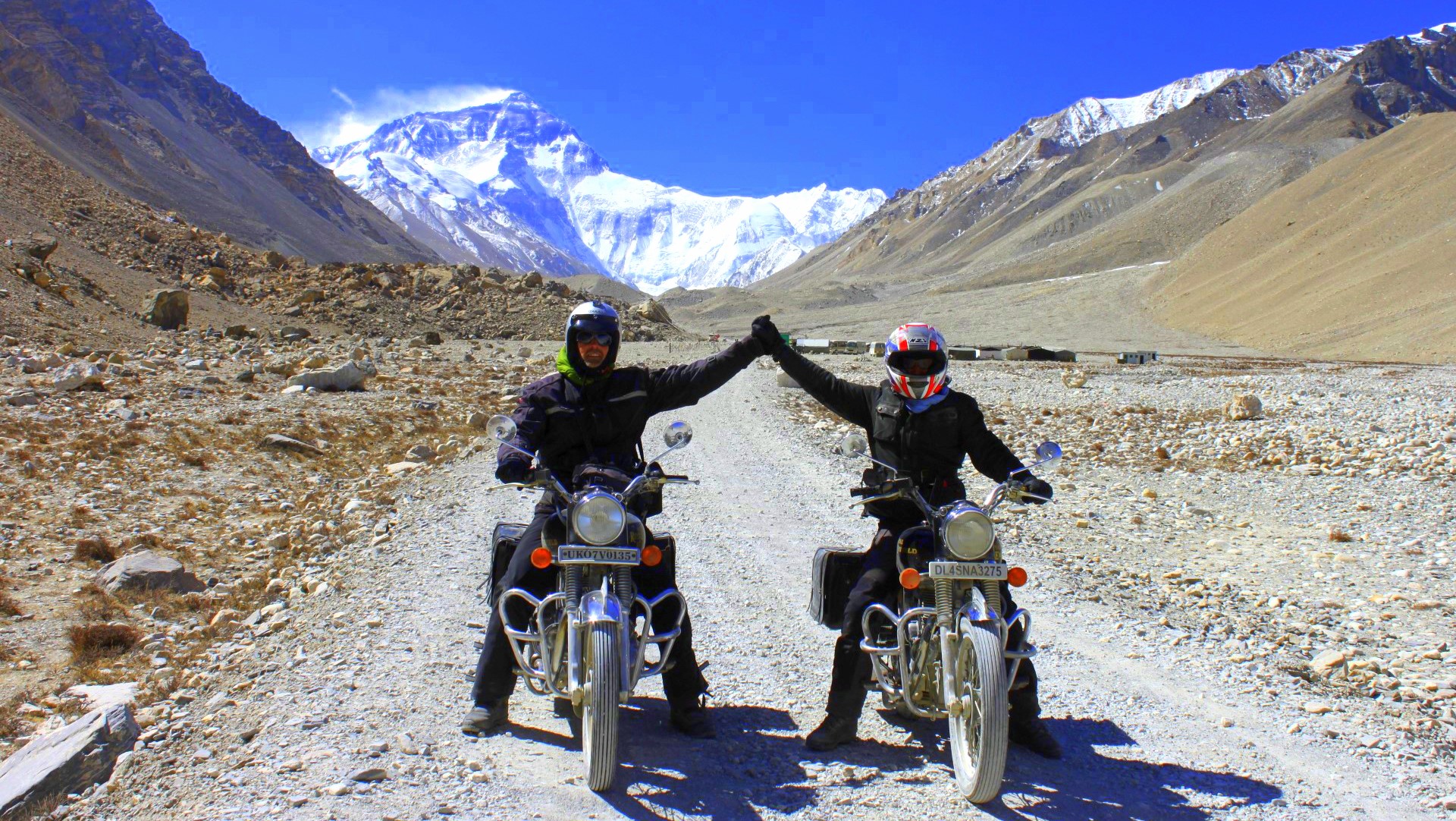
- Flexibility: Renting a car or motorbike allows travelers to create personalized itineraries and venture off the beaten path, accessing remote areas and hidden gems that may not be reachable by public transport.
- Scenic Drives: Tibet's diverse terrain, from towering mountains to serene lakes, provides stunning backdrops for memorable road trips or motorbike rides. Routes like the journey from Lhasa to Everest Base Camp offer unparalleled vistas and photo opportunities.
- Cultural Immersion: Driving through Tibetan villages and rural landscapes provides an authentic cultural experience, allowing travelers to interact with locals, visit monasteries, and witness traditional ceremonies along the way.
- Convenience: Having your own vehicle means you can travel on your schedule, making spontaneous stops to admire landscapes or explore intriguing sights without the constraints of group tours or public transport timetables.
- Adventure: For thrill-seekers, navigating Tibet's challenging roads by motorbike adds an extra layer of excitement and adrenaline. It’s a thrilling way to connect with the region's rugged beauty and conquer high-altitude passes.
- Safety and Comfort: Reliable rental services ensure that vehicles are well-maintained and equipped for Tibet's varying road conditions, ensuring a comfortable and safe journey.
- Logistical Support: Rental agencies like Druk Holidays provide logistical support, including route planning, local tips, and assistance with necessary permits, ensuring a smooth and enjoyable travel experience.
Whether cruising through bustling Tibetan towns or traversing remote mountain trails, renting a car or motorbike in Tibet unlocks endless opportunities for exploration and discovery, making it an ideal choice for independent-minded travelers seeking an unforgettable adventure.
Trekking Routes
Trekking in Tibet offers adventurers a profound journey through some of the world's most pristine and spiritually significant landscapes. Here’s a guide to the diverse trekking routes that showcase Tibet’s natural beauty and cultural richness:

- Mount Kailash Kora: This sacred pilgrimage trek circumambulates Mount Kailash, revered by Buddhists, Hindus, Jains, and Bon followers. The route takes you through rugged terrain, high mountain passes, and serene lakes, offering spiritual reflection amidst breathtaking vistas.
- Everest Base Camp Trek: Starting from Rongbuk Monastery, this trek leads to the northern base camp of Mount Everest. It’s a challenging yet rewarding journey, with views of the world’s highest peak and encounters with Tibetan nomads along the way.
- Ganden to Samye Trek: This classic trek connects two of Tibet’s most important monasteries, Ganden and Samye. It traverses alpine meadows, high mountain passes like the Shug La (5,250 meters), and remote villages, providing insights into Tibetan Buddhism and culture.
- Namtso Lake Trek: Situated at an altitude of 4,718 meters, Namtso Lake is one of Tibet’s holiest lakes. Trekking around its shores offers stunning views of the turquoise waters and the nearby Nyenchen Tanglha mountain range.
- Yarlung Valley Trek: Known as the cradle of Tibetan civilization, the Yarlung Valley trek explores ancient palaces, monasteries, and traditional villages. It’s a cultural journey through Tibet’s history, with opportunities to meet locals and witness their daily life.
- Eastern Tibet Trek: This less-traveled region offers trekking routes through dense forests, remote valleys, and pristine alpine lakes. It’s ideal for those seeking solitude and immersion in Tibet’s untouched natural landscapes.
- Tibetan Plateau Trek: For adventurers seeking a truly off-the-beaten-path experience, trekking across the Tibetan Plateau offers vast expanses of wilderness, encounters with wildlife, and a sense of isolation amidst the region’s extreme altitudes.
Each trekking route in Tibet offers a unique blend of natural beauty, cultural significance, and physical challenge. Whether you’re drawn to spiritual journeys, high-altitude adventures, or cultural immersion, trekking in Tibet promises an unforgettable exploration of the Roof of the World.
Travel Permits and Safety
Obtaining travel permits and ensuring safety are paramount when planning a trip to Tibet, given its unique geographical and political considerations. Here’s what you need to know about travel permits and safety in Tibet:
Travel Permits
- Entry Permit: All travelers to Tibet require an entry permit issued by the Tibet Tourism Bureau. This permit is typically arranged by your tour operator, such as Druk Holidays, and is necessary to enter Tibet from mainland China.
- Alien Travel Permit: For travel beyond Lhasa to certain restricted areas like Everest Base Camp or Mount Kailash, an Alien Travel Permit (PSB permit) is required. This permit is obtained through your tour operator and is essential for visiting these regions.
- Military Permit: In some cases, particularly for areas near sensitive military zones, a Military Permit may be required. This permit is also arranged by your tour operator and is necessary for travel to certain border areas.
Safety Considerations
- Altitude Acclimatization: Tibet’s high altitude requires travelers to acclimatize gradually to prevent altitude sickness. It’s essential to stay hydrated, avoid strenuous activity upon arrival, and listen to your body’s cues.
- Weather Conditions: Tibet’s weather can be unpredictable, with sudden changes in temperature and occasional snowfall, especially at higher altitudes. Pack accordingly and be prepared for varying conditions.
- Cultural Sensitivity: Respect local customs and traditions, particularly when visiting religious sites such as temples and monasteries. Dress modestly, ask permission before taking photos, and follow local etiquette.
- Health Precautions: Ensure you have adequate travel insurance that covers high-altitude trekking and medical emergencies. Carry necessary medications and consult with your healthcare provider before traveling to Tibet.
- Traveling with a Guide: To ensure safety and compliance with local regulations, travelers are required to be accompanied by a licensed guide or travel agency-approved representative throughout their stay in Tibet.
By understanding and adhering to these guidelines for travel permits and safety, you can enjoy a rewarding and hassle-free experience exploring Tibet’s natural beauty, cultural heritage, and spiritual significance. Druk Holidays is dedicated to facilitating a safe and memorable journey through the Roof of the World.
Specialized Tours
Specialized tours in Tibet offer travelers curated experiences that cater to specific interests, ensuring a deeper exploration of the region’s cultural, spiritual, and natural wonders. Here’s why opting for specialized tours with Druk Holidays enhances your Tibetan adventure:
- Cultural Immersion: Our cultural tours immerse travelers in Tibet’s rich heritage, visiting iconic landmarks like the Potala Palace, Jokhang Temple, and Yamdrok Lake. Expert guides provide insights into Tibetan Buddhism, art, and traditions.
- Spiritual Journeys: Pilgrimage tours to sacred sites such as Mount Kailash and Namtso Lake offer spiritual rejuvenation amidst stunning landscapes. These tours often include rituals, meditation sessions, and interactions with local pilgrims.
- Adventure Expeditions: For adrenaline seekers, adventure tours feature activities like trekking to Everest Base Camp, biking through Tibetan Plateau villages, and white-water rafting on the Yarlung Tsangpo River.
- Photography Tours: Designed for photographers, these tours focus on capturing Tibet’s dramatic landscapes, traditional festivals, and vibrant cultural scenes. Access to remote locations and expert photography guidance ensure memorable shots.
- Wildlife and Nature Tours: Explore Tibet’s diverse ecosystems, from spotting rare species like the Tibetan antelope on the Changtang Plateau to birdwatching at Yamdrok Lake. Conservation talks and guided nature walks enhance the experience.
- Customized Itineraries: Tailored tours allow flexibility in itinerary planning, accommodating specific interests, group sizes, and travel preferences. Whether it’s a family vacation, honeymoon, or educational tour, Druk Holidays crafts personalized journeys.
- Logistical Support: Our tours include comprehensive logistical support, from arranging travel permits for Tibet to coordinating accommodations, transportation, and meals, ensuring a seamless and stress-free travel experience.
- Expert Guides: Knowledgeable local guides provide in-depth insights into Tibetan culture, history, and environment, enriching your journey with authentic experiences and ensuring safety and cultural sensitivity throughout.
Embark on a specialized tour with Druk Holidays to discover the wonders of Tibet in a way that aligns with your interests and aspirations. Whether you seek spiritual enlightenment, thrilling adventures, or cultural immersion, our tours are designed to exceed your expectations and create lifelong memories in the mystical land of Tibet.
Transportation in Tibet offers a gateway to an extraordinary journey through one of the world’s most captivating landscapes. From the convenience of flights to Lhasa at Lhasa Gonggar Airport to the awe-inspiring adventure of the Qinghai-Tibet Railway, each mode of transport provides unique opportunities for exploration and cultural immersion. Road trips unveil rugged terrains and hidden cultural treasures, while local buses in Lhasa offer convenient access to historical sites and vibrant markets. For those seeking independence, renting a car or motorbike opens up endless possibilities to discover remote corners and scenic vistas. Essential travel permits for Tibet ensure compliance and safety, while specialized tours by Druk Holidays cater to diverse interests, from spiritual pilgrimages to adrenaline-pumping adventures. Whether trekking ancient paths or capturing stunning landscapes through photography, Tibet’s transportation options promise not just travel, but an unforgettable odyssey through the mystical heart of the Roof of the World.
FAQs of Transporation in Tibet
Q: How can I travel to Tibet?
A: You can travel to Tibet by air or train. Flights to Lhasa are available from major Chinese cities like Beijing, Shanghai, and Chengdu. Alternatively, you can take the scenic Qinghai-Tibet Railway, which connects Lhasa with several cities in mainland China.
Q: What is the Qinghai-Tibet Railway, and why is it famous?
A: The Qinghai-Tibet Railway is the world's highest railway, traversing stunning landscapes and reaching altitudes over 5,000 meters. It’s famous for its engineering marvels and breathtaking views of the Tibetan Plateau.
Q: Do I need a permit to travel to Tibet?
A: Yes, all travelers to Tibet require a Tibet Travel Permit issued by the Tibet Tourism Bureau. Additionally, permits like the Alien Travel Permit (for areas beyond Lhasa) and Military Permit (for certain border areas) may be required depending on your itinerary.
Q: What are the options for local transportation within Lhasa?
A: In Lhasa, you can use local buses to navigate the city conveniently and affordably. These buses cover major landmarks such as the Potala Palace, Jokhang Temple, and Barkhor Street.
Q: Can I rent a car or motorbike in Tibet?
A: Yes, renting a car or motorbike in Tibet is possible and provides flexibility for exploring remote areas and scenic routes. However, travelers are required to be accompanied by a licensed guide or travel agency-approved representative.
Q: Are there road trip options in Tibet?
A: Tibet offers fantastic road trip opportunities, with routes ranging from scenic drives around Namtso Lake to adventurous journeys to Everest Base Camp. These trips allow travelers to immerse themselves in Tibet’s natural beauty and cultural heritage.
Q: What should I consider regarding high-altitude travel in Tibet?
A: Travelers should acclimatize gradually to Tibet’s high altitude to avoid altitude sickness. It’s recommended to stay hydrated, avoid strenuous activities upon arrival, and consult with a healthcare provider before travel.
Q: How can I ensure safety during my travels in Tibet?
A: Ensuring safety in Tibet involves following local regulations, respecting cultural norms, and traveling with a reputable tour operator like Druk Holidays. They provide expert guides, arrange necessary permits, and prioritize traveler safety throughout the journey.
Q: What specialized tours are available in Tibet?
A: Specialized tours in Tibet cater to various interests, including cultural tours to historic sites, spiritual journeys to sacred mountains, adventure expeditions like trekking to Everest Base Camp, and photography tours capturing Tibet’s stunning landscapes and cultural heritage.
Q: Where can I find more information about transportation and travel in Tibet?
A: For detailed information and assistance with planning your trip to Tibet, including transportation options, permits, and specialized tours, contact a reliable travel agency like Druk Holidays or visit official Tibet Tourism websites for updates and guidelines.

